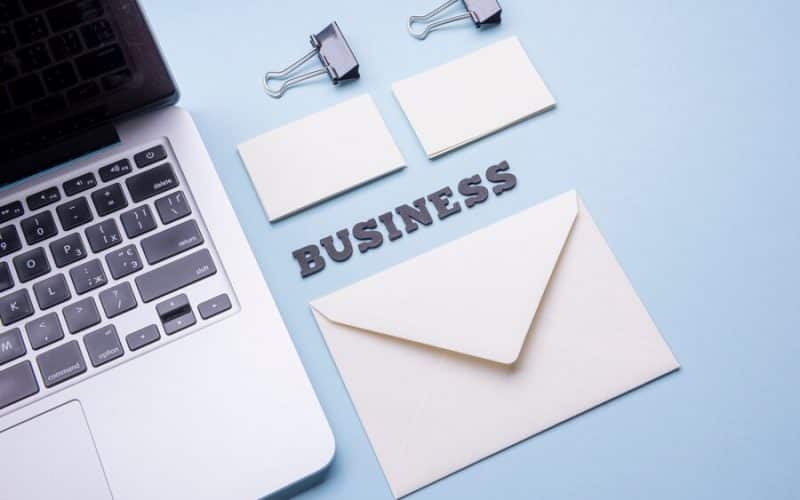Email marketing is one of the most effective B2B tools, allowing firms to create relationships, improve sales, and stay top-of-mind with new clients. While many people concentrate on social media or search engine techniques, B2B email marketing remains a critical component of successful campaigns. But what exactly is business-to-business email marketing? What are the best strategies? How can you develop effective email templates? Let’s delve into this complete guide and see how businesses can use email to produce great results.
Key Takeaways
- Tailoring email content to specific businesses and segmenting your email list based on various factors (such as interests, industry, and behavior) greatly enhances the relevance of your message and increases engagement.
- B2B email marketing thrives on building trust and credibility over time by offering valuable content like industry insights, educational materials, and personalized solutions.
- B2B emails target multiple stakeholders within a business, have longer sales cycles, and should focus more on information-sharing rather than promotional sales pitches, unlike B2C.
- Automation helps streamline email campaigns, while analytics provide key insights into email performance, such as open and click-through rates, allowing marketers to optimize future campaigns.
- B2B email marketing should include a mix of emails, such as welcome messages, newsletters, product announcements, and lead nurturing campaigns, to keep businesses engaged at different stages of the buyer journey.
What is B2B Email Marketing?
B2B email marketing is a powerful and successful approach to connecting with potential customers in the business-to-business (B2B) sector. It enables businesses to communicate directly with their target customers, raise brand awareness, and eventually increase sales.
The key to successful B2B email marketing begins with understanding your target demographic’s needs and producing emails that include relevant material that they will find useful.
You must personalize your B2B email campaigns to the needs of each individual firm. This ensures that your message reaches your target audience and motivates them to take the necessary action. To ensure the success of your B2B emails, you need to first understand why email marketing is vital and what constitutes an effective email campaign.
What are the Benefits of B2B Email Marketing?
You may be wondering why, in an age of social media, chatbots, and influencers, you should care about business-to-business email marketing. There’s a reason why 59% of marketers use it: it provides a return on investment of up to 4400%. If that isn’t enough, consider it one of the most direct ways to contact potential customers.
Not to mention that it is less intrusive and more cost-effective. It is a dependable component of a B2B marketing plan that works discreetly behind the scenes to increase your sales.
Here are a few reasons why you should use B2B emails in your sales and marketing strategies:
#1. It’s a direct connection.
Email marketing for B2B enables you to send a message straight to a prospect. There’s no need to shout from the proverbial rooftops or blast laser beams from your eyeballs to draw attention. Your proposal comes in an inbox, ready to help someone solve a business problem.
#2. It establishes a relationship.
One of the most important things to establish in B2B is trust. It takes time to earn but can be lost in an instant. As a result, it is worthwhile to focus on everything that will help you gain credibility. B2B marketing emails do this because, when done right, they appear more personalized and authentic.
#3. It is cost-effective.
Here’s where the ROI comes into play again. Email marketing is one of the most cost-effective platforms for marketing. With the correct B2B contact database, you may reach a large number of leads without depleting your budget.
#4. It improves sales.
Tailoring your content to certain subsets of your audience increases the likelihood that your leads will convert into sales. By providing content and products that are relevant to their needs and interests, you enhance the possibility that they will buy, sign up for a service, or request additional information.
Why do B2B Emails Demand B2B Strategies?
General email marketing strategies are ineffective for B2B campaigns for the same reason that two almost identical doors require different keys: you’re attempting to let different people in. Here are a few particular reasons why typical email marketing strategies fail when used in B2B campaigns.
#1. Email targeting
Most email marketing initiatives target individuals, but B2B campaigns target businesses—or rather, several persons inside a firm. Whereas a person receiving a B2C email is in charge of every step of their own purchasing journey. A company’s purchasing process involves people in a variety of positions.
When you define a B2B target, you’re actually defining a collection of targets—and your B2B online marketing plan must account for the differences among multiple contacts within a company.
#2. Cycle length
Buying something on your own does not take long. To paraphrase one of my favorite Ariana Grande songs: You See It, Like It, Want It, and Get It. Easy. (In my case, there’s normally a “you check your bank balance” somewhere in there, but that’s a little long for a pop lyric.)
For a firm, however, the purchasing process might be similar to herding cats. Getting many departments to agree on a decision, especially one that requires budget approval, takes Herculean effort—and patience.
#3. Email tone and content
Consumers understand that they are consumers; therefore, when you’re writing B2C emails, you may be more explicit about the fact that you’re attempting to create a sale. Promotions, discounts, and sale announcements are appropriate for a B2C campaign but would seem unusual in an email to a business.
B2B emails perform better when they focus on sharing information and resources. Educational content like as trend reports, industry benchmarks, how-to guides, and webinar recordings can help you demonstrate your brand’s worth to a B2B subscriber.
B2B Email Marketing Strategy
It’s obvious that B2B email marketing is valuable, but what factors should you consider while developing your strategy? Continue reading to learn about the six kinds of email marketing strategies that will help you flex your marketing muscles.
#1. Segmentation
Just like superheroes, your consumers can have a wide range of abilities. Sending a generic email to everyone is a wasteful use of the send button. You should categorize your email list depending on interests, needs, behaviors, industry, region, previous interactions, and so on. Segmented lists are a good strategy for successful B2B email marketing. It will help you make your emails more relevant and increase the likelihood of prospects reading them.
#2. Content
If someone intends to open something that has landed in their inbox, it better be worth their time. Make sure your emails are useful. Share some thoughts or offer a solution to a problem they may be experiencing in their sector (which you happen to be an expert in).
Another factor to consider is making your content more unique and memorable. Don’t be afraid to venture outside the box and experiment with your ideas; you have the option of analyzing marketing data to determine if it works.
#3. Timing
Like any good epic story, rescuing the day entails arriving at the proper time. Don’t overlook this factor when deciding when to send your B2B marketing emails. Consider the time zones, work schedules, and days of the week.
Earlier in the week and in the mornings are ideal for B2B email marketing, but you should experiment to determine what works best for your clients. If you’ve identified a sweet spot, consider turning your emails into a recurring series using drip email marketing, such as “Tuesday Tips” or something similar.
#4. Personalisation
Secret identities are effective for masked crime fighters but not for B2B email marketing lists. And if your lists are out of date, personalization will fail. Another component of sales is email marketing, in which a data provider is involved. Slalom picked Cognism, resulting in $400k in opportunities over a year.
#5. Automation
Email marketing automation allows you to create workflows that send targeted emails to the right customer groups at the right time. Furthermore, you may develop and schedule campaigns, maintain contact lists, and monitor performance.
A B2B email marketing platform can help you streamline and simplify your whole email marketing process, from scheduling sequences to sending bulk emails.
#6. Analytics
This will provide you with useful insights into the performance of your campaigns. Measure important marketing data such as open, click-through, and conversion rates to have a better understanding of what works and what doesn’t in your email campaigns. Then you may make better selections and tailor your future campaigns.
B2B Email Marketing Examples
There are numerous ways to regularly communicate with your audience via their inbox. Here are a few B2B email marketing examples that you might incorporate into your business strategy:
#1. Welcome message
Welcome emails are sent to new subscribers or customers to introduce them to your business and establish the tone of the relationship. Here’s an example.
#2. Newsletter
Newsletters allow you to keep your consumers up to date on the latest news and events from your company. They let you publish useful stuff like blog entries, case studies, how-to instructions, and industry insights. This B2B email example instills trust and loyalty in your customers while also offering facts to help them make informed decisions.
#3. Promotions and exclusive offers
Promotional emails are an excellent approach to attract and encourage people to take advantage of a special deal, sale, or discount. Here’s an example:
Try it if you want to increase conversions and revenue.
#4. Product announcement
Use this type of B2B email marketing to introduce new products or services. Explain how they help the recipient’s business. You could say something like:
#5. Educational content
Providing educational content in an email marketing campaign can be an excellent method to engage customers and prospects. Educational content, such as eBooks, seminars, or manuals, can be used in an email marketing campaign to deliver important knowledge to your target audience while promoting your company as an industry thought leader.
#6. Event invitation
Promoting the webinars, seminars, or conferences that your company hosts or attends. If you’re conducting an event (virtual or in-person), like a webinar, seminar, or workshop, make sure to invite your customers.
Create an email outlining the event, its benefits, and how to join up. You might include incentives for enrolling early or provide ticket discounts.
#7. Lead nurturing
Drip marketing is an effective technique to nurture leads over time. They not only improve relationships with customers but also promote customer loyalty. For effective email nurturing, send relevant email marketing content and progressively guide prospects down the sales funnel.
Begin by warmly presenting yourself and your product or service to the prospect. Include photos, videos, or other forms of content that will help them better understand what you have to offer.
#8. Customer testimonials and case studies.
Using customer testimonials and case studies in B2B cold email marketing will help you develop trust and credibility with potential clients. By showing real-life success stories from existing customers, you can showcase the effectiveness of your product or service while also providing social proof that it works.
#9. Customer Survey
Customer surveys are a critical component of every successful organization. They provide you with vital insights about client preferences and habits, which improves the customer experience and drives more sales.
B2B Email Marketing Templates
Using B2B email marketing templates can help you save time and maintain consistency across campaigns. However, they must be adaptable to varied audiences.
#1. Simple Product Update Template
This template is great for informing your clients about new features and updates.
Subject: “Exciting New Updates You Don’t Want To Miss!”
Body:
Hello, [First Name]
We’ve worked hard to improve [Product Name], and we’re delighted to share the most recent upgrades with you. [Shortly summarize the upgrades and how they benefit the receiver.]
Please reach out if you have any questions!
Cheers, [Your Company’s Name]
#2. Event Invitation Template.
Use this to invite leads or clients to webinars, conferences, or events.
Subject: “Join Us for an Exclusive [Event Type]!”
Body:
Hello [First Name],
We are excited to invite you to our upcoming [Event Type] on [Date]. You will learn useful information on [Specific Topic] and hear from industry leaders.
Don’t miss out—[Register now]!
Best wishes, [your name].
“Tired of struggling to create engaging B2B emails? Our template library has the solution. Download it now and discover how to effortlessly craft emails that convert.”
What is email marketing in B2B?
B2B email marketing is a sort of marketing in which email messages are sent to businesses rather than individual customers. You communicate with potential customers (B2B buyers) via their business email, educate them on your products, and convert them into marketing qualified leads (MQLs) for the sales staff.
How effective is B2B email marketing?
B2B email marketing can be highly effective if done correctly. It allows you to target specific businesses, build relationships, and provide valuable content. However, the effectiveness of B2B email marketing depends on several factors. Here are some key reasons why B2B email marketing is effective:
- High ROI
- Targeted reach
- Relationship building
- Measurable results
- Cost-effective
How to win at B2B email marketing?
B2B email marketing best practices:
- Tie your goals to each email.
- Create content based on your target persona.
- Create a realistic timeline.
- Showcase thought leadership.
- Share valuable information.
- Include one CTA per email.
- Personalize your emails.
- Incorporate responsive design.
Who are targeted in B2B email marketing?
Business-to-business (B2B) email marketing efforts are aimed at businesses rather than individual consumers. The target could be one or more major stakeholders or departments in a corporation.
Conclusion
B2B email marketing is one of the most powerful tools in a marketer’s arsenal. Email marketing, with the correct approach, personalization, and focus on value, can assist your company in nurturing leads, creating connections, and generating revenue. Whether you’re creating a welcome series or testing new templates, the idea is to maintain consistency and provide true value to your readers.
So, now that you’ve learned the fundamentals of B2B email marketing, how will you put these techniques into action? Will you begin with a welcome series, go into case studies, or create the ideal re-engagement email? Let’s start the conversation; what’s your first step?
Related Articles
- Guide to Becoming a Highly Effective Email Marketing Specialist
- Powerful Video Email Marketing Strategies to Boost Engagement In 2024
- How to Write a Marketing Email: A Step-by-Step Guide for 2024
- Push vs. Pull Marketing Strategies: Which One Drives Better Results?
- Ultimate Guide to Integrated Marketing Campaign + Famous Brand Examples.






